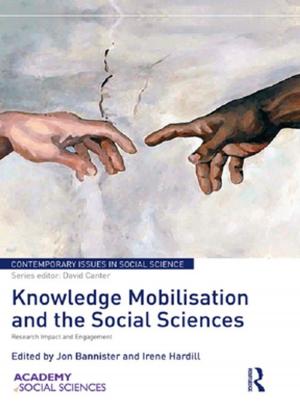Transforming Public Services by Design
Re-Orienting Policies, Organizations and Services around People
Business & Finance| Author: | Sabine Junginger | ISBN: | 9781317007869 |
| Publisher: | Taylor and Francis | Publication: | December 1, 2016 |
| Imprint: | Routledge | Language: | English |
| Author: | Sabine Junginger |
| ISBN: | 9781317007869 |
| Publisher: | Taylor and Francis |
| Publication: | December 1, 2016 |
| Imprint: | Routledge |
| Language: | English |
For policy makers and policy implementers, design challenges abound. Every design challenge presents an opportunity for change and transformation. To get from policy intent to policy outcome, however, is not a straightforward journey. It involves people and services as much as it involves policies and organizations. Of all organizations, perhaps government agencies are perceived to be the least likely to change. They are embedded in enormous bureaucratic structures that have grown over decades, if not centuries. In effect, many people have given up hope that such an institution can ever change its ways of doing business. And yet, from a human-centered design perspective, they present a fabulous challenge. Designed by people for people, they have a mandate to be citizen-centered, but they often fall short of this goal. If human-centered design can make a difference in this organizational context, it is likely to have an equal or greater impact on an organization that shows more flexibility; for example, one that is smaller in size and less entangled in legal or political frameworks.
Transforming Public Services by Design offers a human-centered design perspective on policies, organizations and services. Three design projects by large-scale government agencies illustrate the implications for organizations and the people involved in designing public services: the Tax Forms Simplification Project by the Internal Revenue Service (1978-1983), the Domestic Mail Manual Transformation Project by the United States Postal Service (2001-2005) and the Integrated Tax Design Project by the Australian Tax Office. These case studies offer a unique demonstration of the role of human-centered design in policy context.
This book aims to support designers and managers of all backgrounds who want to know more about reorienting policies, organizations and services around people.
For policy makers and policy implementers, design challenges abound. Every design challenge presents an opportunity for change and transformation. To get from policy intent to policy outcome, however, is not a straightforward journey. It involves people and services as much as it involves policies and organizations. Of all organizations, perhaps government agencies are perceived to be the least likely to change. They are embedded in enormous bureaucratic structures that have grown over decades, if not centuries. In effect, many people have given up hope that such an institution can ever change its ways of doing business. And yet, from a human-centered design perspective, they present a fabulous challenge. Designed by people for people, they have a mandate to be citizen-centered, but they often fall short of this goal. If human-centered design can make a difference in this organizational context, it is likely to have an equal or greater impact on an organization that shows more flexibility; for example, one that is smaller in size and less entangled in legal or political frameworks.
Transforming Public Services by Design offers a human-centered design perspective on policies, organizations and services. Three design projects by large-scale government agencies illustrate the implications for organizations and the people involved in designing public services: the Tax Forms Simplification Project by the Internal Revenue Service (1978-1983), the Domestic Mail Manual Transformation Project by the United States Postal Service (2001-2005) and the Integrated Tax Design Project by the Australian Tax Office. These case studies offer a unique demonstration of the role of human-centered design in policy context.
This book aims to support designers and managers of all backgrounds who want to know more about reorienting policies, organizations and services around people.















